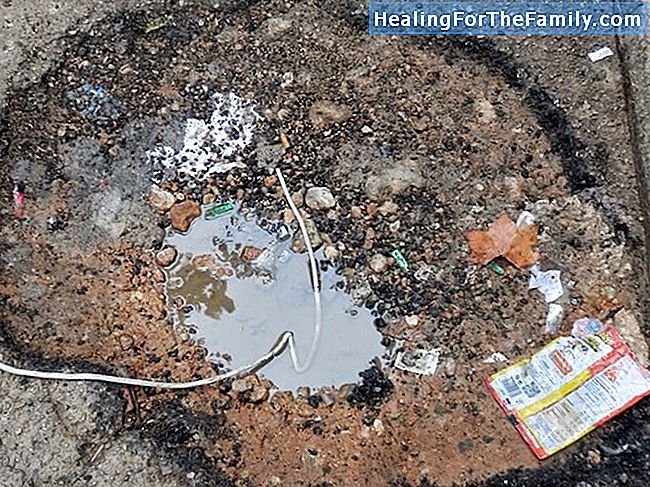How to meet calcium needs in childhood
Calcium is the most abundant mineral in the body, since it is part of the skeleton, and we have, in adulthood, no less than more than 200 bones in the body. Even at birth, the number of bones is even greater, and we should not forget the teeth, where calcium is also very present. However, we must en
Calcium is the most abundant mineral in the body, since it is part of the skeleton, and we have, in adulthood, no less than more than 200 bones in the body. Even at birth, the number of bones is even greater, and we should not forget the teeth, where calcium is also very present.
However, we must ensure that this mineral is present in the child's diet to guarantee the health of his bones in the growth stage. Therefore we tell you how to meet the calcium needs in childhood.
Calcium in childhood

The main role of calcium in childhood and in adult life is the maintenance of a healthy bone tissue, so that it is not only part of the structure of bones and teeth, but also forms a reserve to ensure that the blood concentration is optimal and sufficient to face the stages of growth and maintenance of strong and healthy bones. Calcium is, for these reasons, of extreme importance during the first years of life and during adolescence, since they are the stages of maximum growth.
Adequate absorption of calcium from the diet is the basis for good bone health, and are two vitamins, vitamin D and vitamin K, which have more weight in this process. Vitamin D, which also plays an important role in the mineralization of bones, favors the absorption of calcium and phosphorus both in the intestine and kidney, while vitamin K helps fix the calcium in the bones. Furthermore, in order to ensure a good stability of the bone mass, a balance between phosphorus and calcium necesario is necessary, so it is convenient that this balance should also be maintained in the diet. Calcium-rich foods for childrenAt birth, babies get the calcium they need from breast milk or formula, and, when starting complementary feeding, this is still their main source. When your diet stops being so rich in milk, you should look at the amounts of other calcium-rich foods you eat, including cow's milk and dairy products.
Bearing in mind that a glass of milk (whose calcium is the best absorbed due to the presence of lactose, vitamin D and an adequate calcium / phosphorus ratio) has approximately 300 mg of calcium:
- Children 1-3 years old of age they need little more than 2 glasses of milk
- Children of 3-8 years need 3 glasses of milk
- From 9 years of age their need increases to 4 glasses.
Other foods rich in calcium are broccoli, green leafy vegetables such as spinach or Swiss chard, canned sardines, prawns and prawns, nuts and seeds (almonds, hazelnuts, pistachios and sesame seeds, especially) and legumes, mainly chickpeas and soybeans.
Sardines, if eaten with a spine, also contain an excellent calcium / phosphorus ratio. Additionally, leafy green vegetables are rich in vitamin K and fish and seafood are rich in vitamin D.












